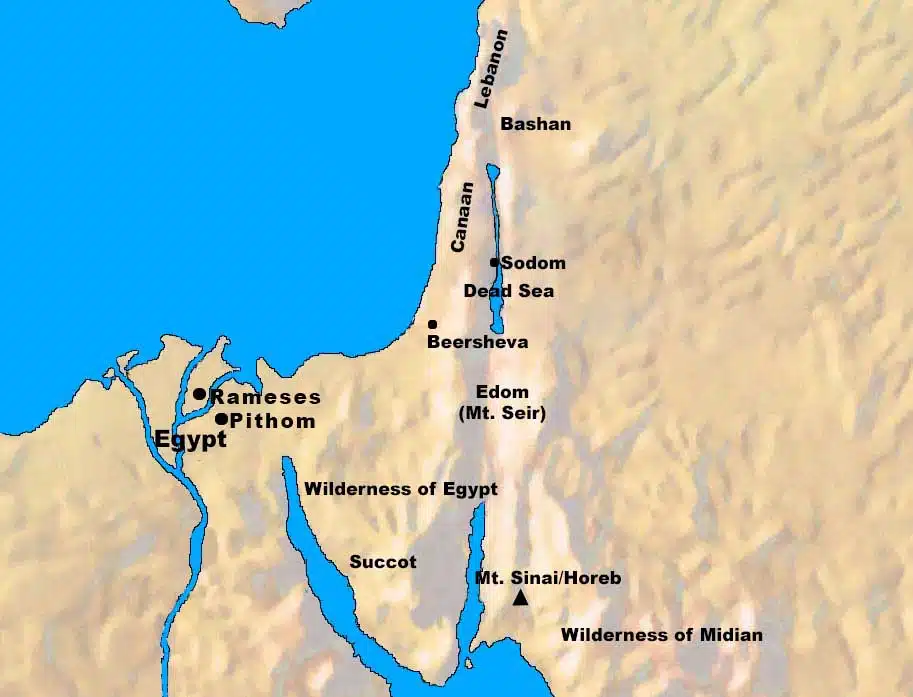The LORD describes what ordinary priests were to wear.
The LORD details the outer garments for Aaron’s sons to wear. They included tunics, a long garment similar to a shirt made of linen. Sashes, made of blue, scarlet, and purple linen and to be worn while serving the LORD. Caps, a turban-like headdress worn by the priests. These were different from the turban worn by the high priest.
Like the clothing described for the high priest earlier in the chapter, these garments were for glory and for beauty. This means that the garments were an outward indication that the priests were engaged in a holy calling before a holy God, which reminded them they needed to be dedicated. Also that they were deserving of honor and respect because they were to be completely dedicated to serving the LORD in priestly duties.
Verse 41 instructs Moses on what to do with the clothing described in this chapter. In preparation for their ordination into the priesthood, Moses was to put them on Aaron your brother and on his sons with him. Once they are properly clothed, Moses was instructed to anoint them and ordain them and consecrate them, that they may serve Me as priests.
Before the ordination could take place, there was one other article of clothing that needed to be dealt with. The LORD told Moses to make for them linen breeches to cover their bare flesh; they shall reach from the loins even to the thighs. The linen breeches were essentially underwear that were to extend from the loins, or hips, even to the thighs. The linen breeches would cover roughly the same area as a pair of biker shorts.
The LORD commanded that they, the linen breeches, shall be on Aaron and on his sons when they enter the tent of meeting, or when they approach the altar to minister in the holy place. This would mean that the priests needed to always wear their underwear when serving in the tabernacle. There was to be nothing uncovered when serving the LORD. This is in direct contrast to pagan practices, where nudity and sexual immorality were common in the worship of pagan gods and goddesses.
The importance of wearing the linen breeches is underscored by the very serious penalty for not doing so. If the priests failed to wear them, it was considered sacrilege and the priest would incur guilt and die. It was a capital offense to violate this command, and it was to be a statute forever to him and to his descendants after him. This rule was to be in place for the priests of all ages. It seems clear God was drawing a clear and firm line in the sand prohibiting sexual practices from polluting worship.
The Suzerain (Ruler) God chose Aaron and his sons to serve as priests to stand between Him and the Israelites. These priests were to minister to God on behalf of the people. Like the rest of the people, the priests were sinful and needed to make atonement for themselves (Leviticus 16:17). However, they were supposed to represent God before the people. The LORD demanded that the priests be clothed with special and holy garments, which were for glory and for beauty. These holy garments served to reflect on God’s holiness and to teach the Israelites about how to approach their holy Suzerain God (Exodus 28:2).
As New Testament Christians, believers are called “priests” (I Pet. 2:5, 9). These passages should cause us to reflect on how we dress, and how we carry ourselves before others.
Biblical Text:
40 “For Aaron’s sons you shall make tunics; you shall also make sashes for them, and you shall make caps for them, for glory and for beauty. 41 You shall put them on Aaron your brother and on his sons with him; and you shall anoint them and ordain them and consecrate them, that they may serve Me as priests. 42 You shall make for them linen breeches to cover their bare flesh; they shall reach from the loins even to the thighs. 43 They shall be on Aaron and on his sons when they enter the tent of meeting, or when they approach the altar to minister in the holy place, so that they do not incur guilt and die. It shall be a statute forever to him and to his descendants after him.
Check out our other commentaries:
-
Hosea 4:15-19 meaning
In the midst of leveling additional accusations against Israel for playing the harlot by following pagan ways that violate their covenant with God, the LORD...... -
Matthew 8:28-34 meaning
Jesus and His disciples arrive on the other side of the sea on the eastern shore in the Greco-Roman province called the Decapolis. Two violent,...... -
Revelation 19:11-16 meaning
John sees the moment of Jesus’s second coming. In contrast to Christ’s first advent (that of a poor suffering servant, born in a stable, riding...... -
Hebrews 6:1-3 meaning
Things like repentance, belief, cleanliness, resurrection, and eternal judgement — these are all basic, foundational aspects of Christianity. They are not signs of mature believers....... -
Exodus 33:7-11 meaning
The LORD has decided to no longer dwell in the cap with Israel. Instead, He met Moses in a tent that was outside the camp.......



